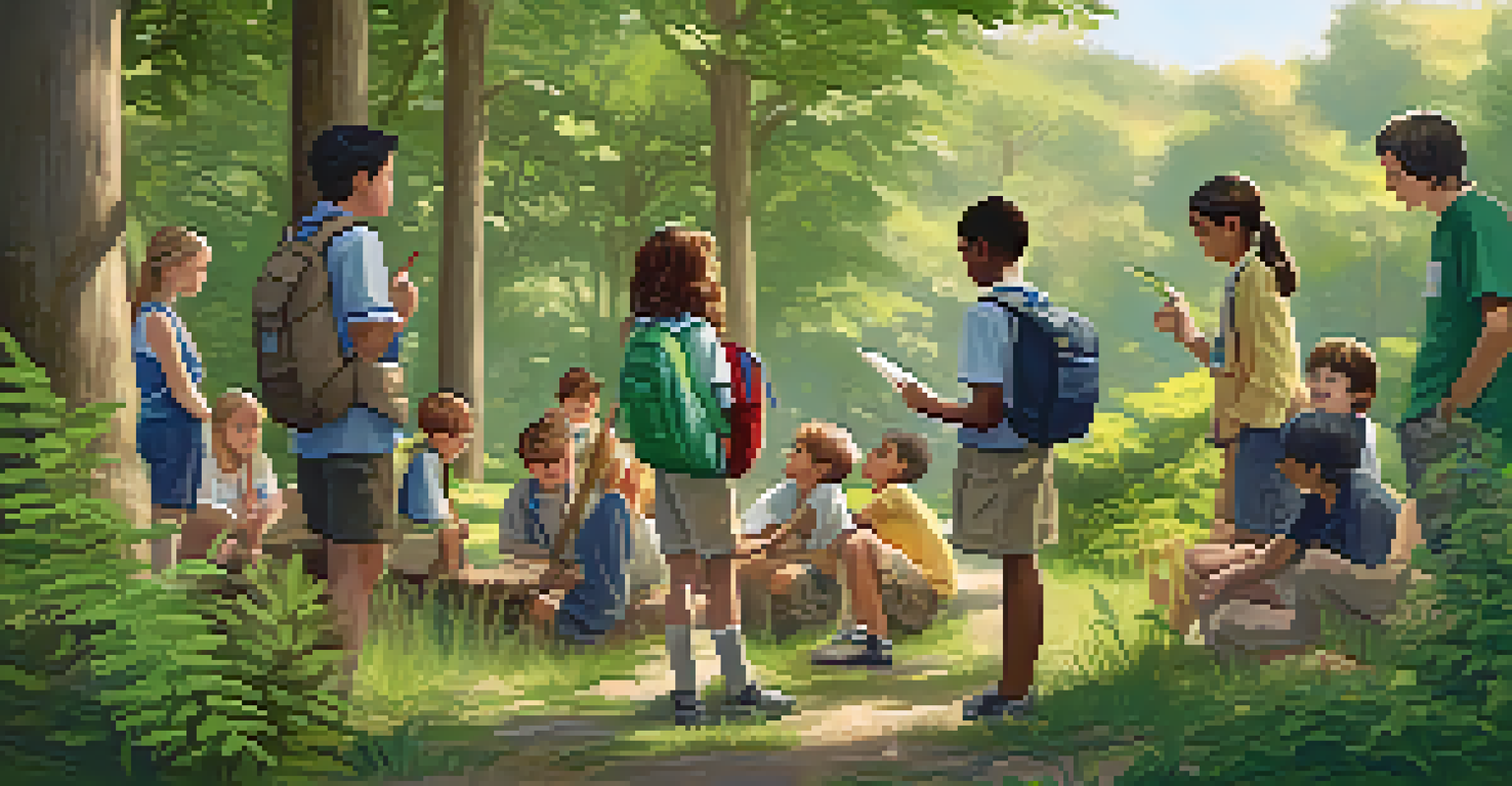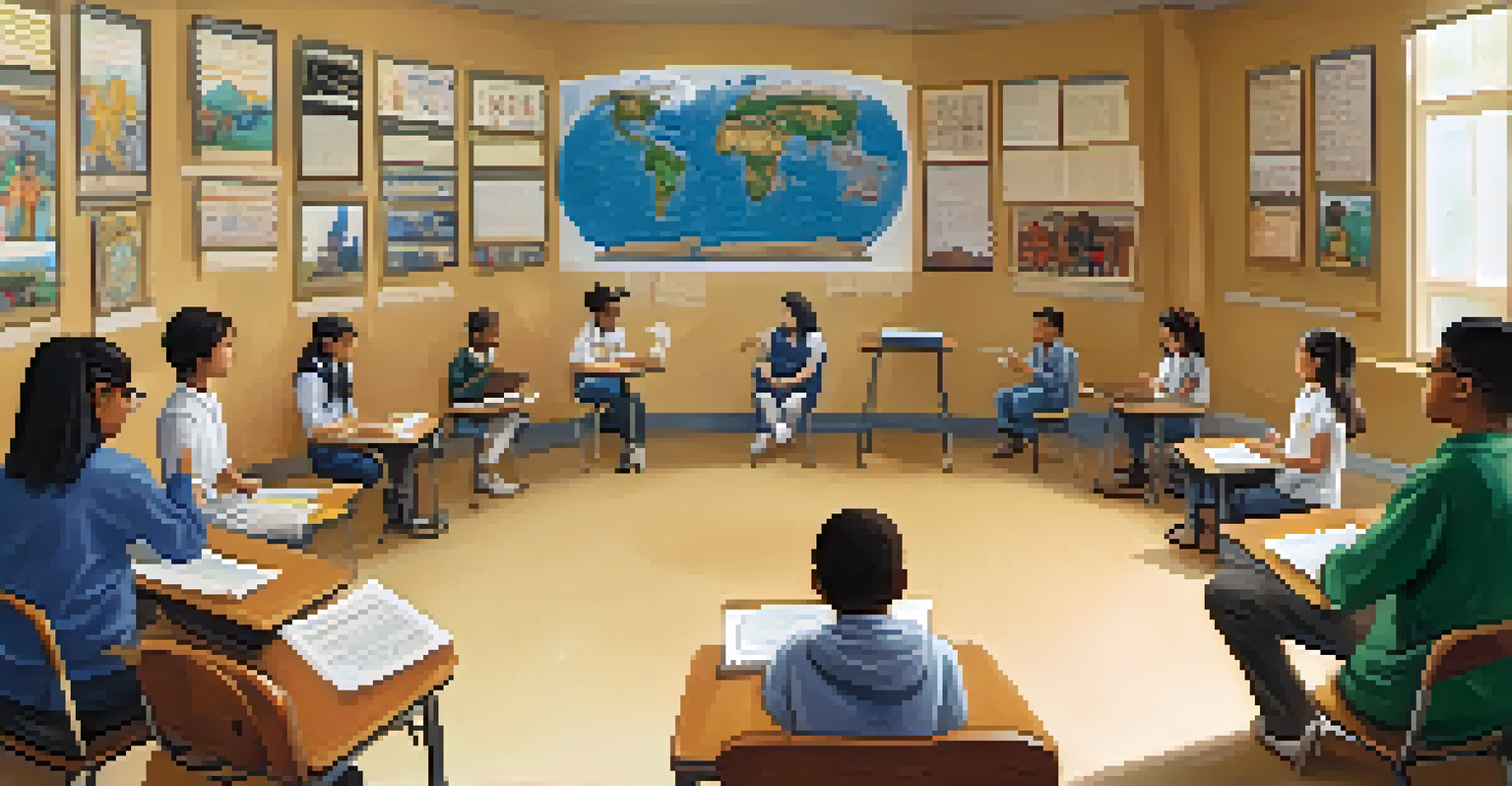Culturally Responsive Approaches to Teaching Science

Understanding Culturally Responsive Teaching in Science
Culturally responsive teaching (CRT) acknowledges the diverse backgrounds of students and integrates their cultural references into the learning process. In science education, this means recognizing how different cultures contribute to scientific understanding and inquiry. For instance, Indigenous knowledge systems have unique insights into environmental science that can enrich traditional curricula.
Education is not the filling of a pail, but the lighting of a fire.
By valuing students' cultural identities, educators create an inclusive environment that fosters engagement and motivation. This approach not only enhances understanding but also helps students see themselves as legitimate contributors to the field of science. When students feel their culture is respected, they are more likely to participate actively in class discussions and activities.
Moreover, CRT encourages educators to reflect on their own biases and teaching methods. This self-awareness can lead to more equitable practices that benefit all students, making science more accessible and relatable. By integrating culturally relevant materials and examples, teachers can bridge the gap between students' home lives and the school curriculum.
Why Cultural Context Matters in Science Education
Cultural context plays a pivotal role in how students approach and understand scientific concepts. Different cultures have unique ways of interpreting natural phenomena, which can offer diverse perspectives on scientific principles. For example, many cultures possess rich traditions in astronomy, which can be utilized to teach concepts like orbit and gravity in a more relatable way.

When educators incorporate students' cultural contexts into lessons, they help demystify complex scientific ideas. This approach not only makes the material more engaging but also allows students to draw connections between their knowledge and academic content. By doing so, teachers can cultivate a deeper understanding and appreciation for science.
Culturally Responsive Teaching Benefits
Culturally responsive teaching enhances student engagement and understanding by integrating their diverse cultural identities into the science curriculum.
In addition, recognizing the cultural context helps students develop critical thinking skills. They learn to analyze and evaluate information from multiple viewpoints, which is essential in scientific inquiry. This multifaceted approach prepares students for real-world problem-solving, making them more effective scientists and citizens.
Strategies for Implementing Culturally Responsive Science Lessons
To implement culturally responsive teaching effectively, educators can start by incorporating culturally relevant materials in their science curriculum. This might include using case studies from various cultures or inviting guest speakers who can share their expertise and experiences. Such practices help students to see the relevance of science in their own lives and communities.
The more that you read, the more things you will know. The more that you learn, the more places you'll go.
Another strategy is to encourage collaborative learning that respects and utilizes the diverse knowledge students bring to the classroom. Group projects can be designed to allow students to explore scientific concepts through the lens of their own cultural experiences. This not only fosters teamwork but also validates their perspectives, enriching the overall learning experience.
Additionally, professional development for teachers is crucial. Workshops focused on cultural competence can equip educators with the tools they need to adapt their teaching methods. By learning how to create inclusive lesson plans, teachers can better engage all students and promote a sense of belonging within the science classroom.
Creating a Safe and Inclusive Classroom Environment
A safe and inclusive environment is essential for culturally responsive teaching. Students need to feel secure in expressing their thoughts and asking questions without fear of judgment. Establishing ground rules that promote respect and open dialogue can help cultivate this atmosphere.
Teachers can also celebrate cultural diversity by incorporating various cultural events and traditions into the curriculum. This not only acknowledges students' backgrounds but also enriches the classroom experience for everyone. When students see their cultures represented, they are more likely to participate and engage with the material.
Importance of Community Engagement
Engaging the community enriches science education by providing real-world connections and fostering pride in students' cultural heritage.
Furthermore, creating a space where students can share their cultural experiences related to science can deepen understanding. By encouraging storytelling and personal connections to scientific concepts, educators can enhance relatability and interest in the subject matter. This practice helps to build community and mutual respect among classmates.
Assessing Student Learning in a Culturally Responsive Way
Assessment in a culturally responsive science classroom should reflect diverse learning styles and cultural backgrounds. Traditional testing methods may not accurately capture students' understanding, especially if those methods are not culturally relevant. Instead, educators can use a variety of assessment tools, such as portfolios, presentations, and group projects.
By employing diverse assessment strategies, teachers can provide multiple avenues for students to demonstrate their knowledge. This inclusivity not only supports different learning styles but also allows for a broader range of cultural expression. For instance, students might illustrate their findings through art or presentations in their native language, showcasing their understanding in ways that resonate with their cultural identity.
Moreover, ongoing feedback is essential to ensure that all students are progressing. Regular check-ins and formative assessments can help educators adapt their teaching strategies to meet students' needs. This responsive approach fosters a growth mindset, encouraging students to embrace challenges and view failures as learning opportunities.
The Role of Community in Culturally Responsive Teaching
Engaging the community is a vital aspect of culturally responsive teaching. Schools can collaborate with local organizations, cultural groups, and families to create a richer learning experience. By involving community members in the educational process, teachers can provide students with authentic, real-world connections to science.
For example, field trips to local science museums, nature reserves, or cultural landmarks can help students see the relevance of their studies in a broader context. These experiences not only enhance understanding but also foster a sense of pride in their cultural heritage. Students can learn about scientific concepts while also appreciating the contributions of their own culture to the scientific field.
Challenges in Implementing CRT
Despite its benefits, educators often face challenges in implementing culturally responsive teaching due to a lack of resources and training.
Additionally, creating partnerships with community experts can enhance the curriculum. Inviting scientists from diverse backgrounds to share their research and experiences can inspire students and broaden their perspectives on potential careers in science. This connection between education and community can empower students and encourage them to pursue their interests in the sciences.
Challenges and Solutions in Culturally Responsive Science Teaching
While culturally responsive teaching holds great promise, it also presents challenges for educators. One common obstacle is the lack of resources or training to effectively implement CRT methods. Many teachers may feel unprepared to address cultural differences in their classrooms and may struggle to integrate diverse perspectives into their lessons.
To overcome these challenges, schools should invest in ongoing professional development focused on cultural responsiveness. Providing teachers with the tools and resources they need can help them feel more confident and competent in their approach. Collaborative planning with colleagues can also foster sharing of best practices and support networks.

Additionally, educators can seek out community resources and partnerships to enrich their teaching. Local organizations often offer workshops, materials, or guest speakers that can enhance the curriculum. By leveraging these resources, teachers can create a more engaging and culturally relevant science education experience for their students.